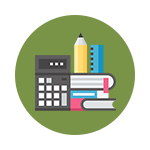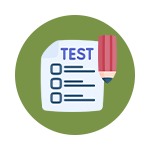The Digital SAT Preparation
The SAT prep is an entrance test for students seeking admission to undergraduate programs abroad, especially in the US, Canada, and Singapore. Many universities in India also accept SAT scores.
SAT Digital is now Live

The SAT prep is an entrance test for students seeking admission to undergraduate programs abroad, especially in the US, Canada, and Singapore. Many universities in India also accept SAT scores.







The Digital SAT is an entrance test for students seeking admission to undergraduate programs abroad, especially in the US, Canada, and Singapore. Many universities in India also accept SAT scores.
The Digital SAT tests 2 skills:
These skills are tested through 2 sections consisting of 2 modules each.
The Reading and Writing Section has 54 questions, which are divided into two equal-length modules, each having 27 questions. Students have 32 minutes to complete each module.
The Reading and Writing Section score ranges from 200 to 800 points.
Questions in the Reading and Writing Section represent four content domains:
The Math section consists of 44 questions, which are divided into two equal-length modules, each having 22 questions. Students have 35 minutes to complete each module. The Math Section score ranges from 200 to 800 points.
The Math test questions are divided into 4 main areas: